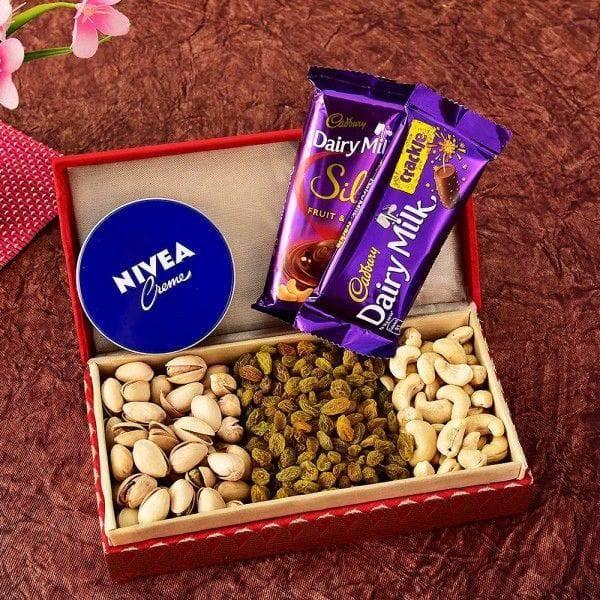Heavy-Duty Corrugated Boxes for Aerospace Component Shipping
In the aerospace industry, where precision, safety, and reliability are paramount, even the packaging of components plays a critical role in ensuring operational success. From delicate avionics to massive engine parts, aerospace components must be shipped in a way that prevents damage, contamination, or mishandling. This is where heavy-duty corrugated boxes have become indispensable. Designed to provide maximum protection during transit, these boxes offer the strength, customizability, and compliance required in this highly regulated field. Top Corrugated Box Manufacturers In Chennai have risen to the challenge, creating packaging solutions tailored to the demanding requirements of aerospace shipping.
Why Aerospace Components Need Special Packaging
Aerospace components are not just expensive; they are often mission-critical. A minor dent, scratch, or misalignment can compromise performance, cause delays in assembly, or even result in costly operational failures. As these parts frequently travel long distances—sometimes across continents—they face hazards like vibration, moisture, temperature fluctuations, and rough handling.
The packaging must therefore:
-
Withstand high stacking loads.
-
Provide cushioning against shocks and vibrations.
-
Prevent moisture and dust ingress.
-
Allow secure stacking for space optimization in cargo holds.
-
Comply with industry standards for international shipping.
Features of Heavy-Duty Corrugated Boxes
Heavy-duty corrugated boxes are not your standard cardboard cartons. They are engineered with specific properties to handle extreme shipping conditions.
-
Multi-Wall Construction
Double-wall or triple-wall corrugated boards give these boxes exceptional strength and load-bearing capacity. -
High Burst and Edge Crush Resistance
Ensures boxes maintain integrity even under high compression or impact. -
Moisture and Chemical Resistance
Special coatings and liners protect components from humidity and corrosive substances. -
Custom Sizing and Inserts
Tailor-made dimensions and internal supports secure parts in place and prevent movement during transit. -
Compatibility with Palletization
Designed for easy integration with plastic or wooden pallets for streamlined logistics.
Customization for Aerospace Needs
The aerospace industry often requires bespoke packaging for components of irregular shapes and sizes. Heavy-duty corrugated boxes can be designed to accommodate everything from small circuit boards to oversized fuselage parts.
Common customization options include:
-
Foam Inserts – Absorb shocks and vibrations.
-
Anti-Static Liners – Protect sensitive electronics.
-
Heat-Resistant Linings – Shield parts from extreme temperature changes.
-
Printed Handling Instructions – Ensure correct handling throughout the supply chain.
By combining these features, manufacturers ensure each box offers both protection and ease of handling.
The Role of Supplementary Packaging Materials
While the corrugated box provides the structural strength, additional materials enhance protection during shipping. Midway in the supply chain, businesses turn to Packaging Material Manufacturers In Chennai for products like bubble wrap, stretch film, VCI bags, and foam padding. These supplementary materials act as an extra layer of defense, guarding against specific risks such as static discharge, abrasion, or condensation.
This collaborative approach—pairing the durability of heavy-duty corrugated boxes with specialized packaging materials—results in a comprehensive solution that meets both safety and compliance requirements.
Applications in Aerospace Component Shipping
Heavy-duty corrugated boxes are widely used across various segments of the aerospace sector:
-
Avionics and Control Systems – Require anti-static protection and precision cushioning.
-
Aircraft Interiors – Seats, panels, and fittings shipped in bulk while preventing scratches.
-
Engine Parts – Heavy, high-value components needing reinforced boxes and secure bracing.
-
Landing Gear Components – Transported in moisture-resistant corrugated containers.
-
Maintenance, Repair, and Overhaul (MRO) Parts – Packed for frequent, urgent shipments.
Compliance and Quality Assurance
The aerospace sector operates under strict international standards, such as AS9100 for quality management. Packaging must not only protect the cargo but also comply with guidelines for traceability, labeling, and safe handling. Heavy-duty corrugated boxes can be produced in compliance with these standards, incorporating barcodes, QR codes, and tamper-evident seals.
Case Study: Improving Efficiency in Aerospace Exports
A leading aerospace exporter in South India faced recurring damage claims for avionics modules shipped overseas. The company switched to triple-wall corrugated boxes with anti-static foam inserts and moisture-resistant coatings. This change reduced damage rates by 90%, improved customer satisfaction, and allowed the company to reuse boxes for multiple shipments, lowering costs over time.
Cost and Lifecycle Benefits
Although heavy-duty corrugated boxes are more expensive than standard cartons, they deliver substantial value in the aerospace industry:
-
Reduced Product Loss – Lower damage rates lead to fewer replacements.
-
Reusable in Some Applications – Durable construction allows multiple shipment cycles.
-
Lower Freight Costs – Lighter than wooden crates while offering comparable protection.
-
Optimized Storage – Stackable and collapsible designs save space when empty.
These factors contribute to an excellent return on investment for aerospace manufacturers and logistics providers.
Sustainability in Aerospace Packaging
Sustainability is increasingly important in all industries, including aerospace. Heavy-duty corrugated boxes offer several eco-friendly benefits:
-
Recyclable Materials – Most boxes are made from renewable resources and can be recycled at the end of their lifecycle.
-
Reduced Use of Non-Recyclables – Lighter weight compared to wooden crates reduces reliance on less sustainable options.
-
Energy Efficiency – Lower weight means reduced fuel consumption in transport.
Manufacturers are also developing water-based inks, biodegradable coatings, and recycled fiberboard options to further reduce environmental impact.
Future Innovations in Corrugated Aerospace Packaging
The next generation of heavy-duty corrugated boxes for aerospace will likely include:
-
Smart Packaging Technology – Embedded sensors to monitor temperature, humidity, and impact during transit.
-
Hybrid Materials – Combining corrugated fiberboard with high-strength plastics or composites for enhanced durability.
-
Automated Design Software – Enabling rapid prototyping of custom packaging for unique components.
-
Lightweight Reinforcements – Providing the same strength at a lower overall weight.
These innovations will further improve safety, compliance, and cost-effectiveness in aerospace logistics.
Best Practices for Aerospace Packaging Teams
To maximize protection and efficiency when using heavy-duty corrugated boxes:
-
Conduct Risk Assessments – Identify all potential hazards during transit.
-
Select the Right Board Grade – Match strength to the weight and fragility of the part.
-
Incorporate Internal Supports – Use foam, partitions, or braces to prevent movement.
-
Use Moisture and Static Protection – Especially for sensitive electronics and metallic parts.
-
Train Handling Staff – Ensure proper stacking, lifting, and loading techniques.
Conclusion
Heavy-duty corrugated boxes have proven to be an essential asset in the aerospace supply chain. By offering exceptional strength, customization, and compliance with industry standards, they ensure the safe delivery of high-value, mission-critical components. When combined with supplementary packaging materials and best-practice handling, these boxes provide a cost-effective, sustainable, and reliable solution for even the most challenging shipping requirements.
For aerospace manufacturers and exporters, investing in high-quality corrugated packaging isn’t just about protecting parts—it’s about protecting the integrity of the entire operation. With ongoing innovations, heavy-duty corrugated boxes will continue to set the standard for aerospace component shipping well into the future.


